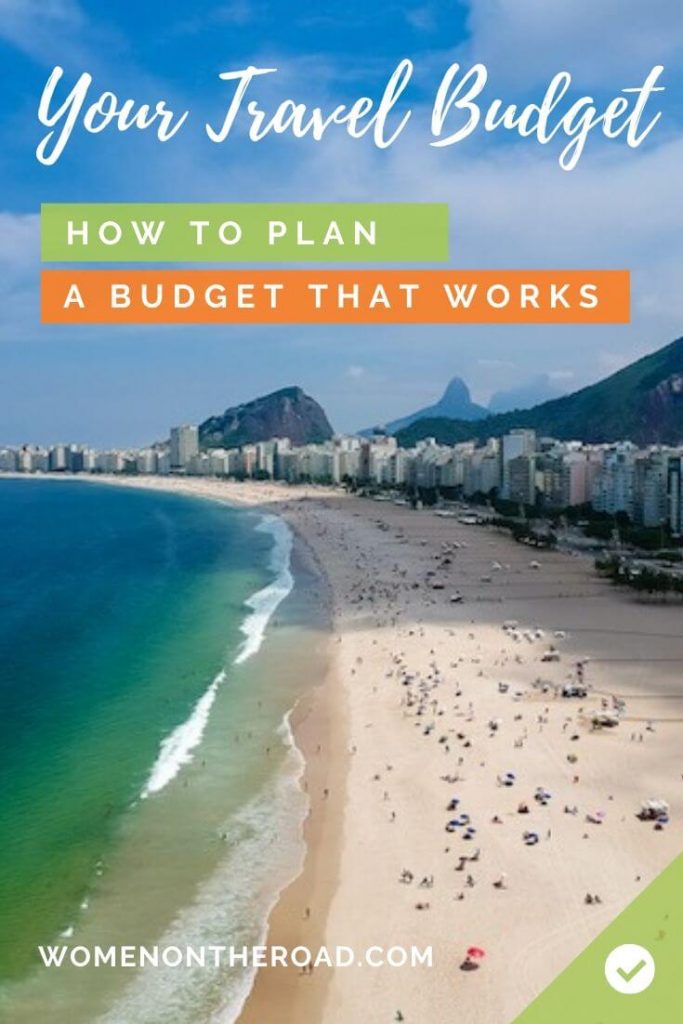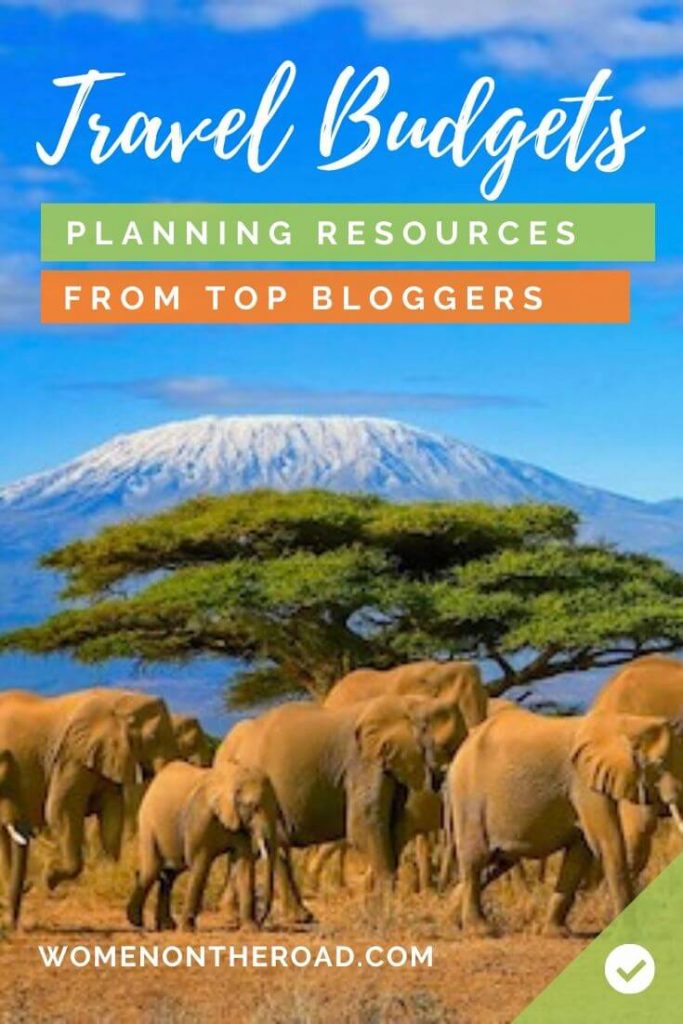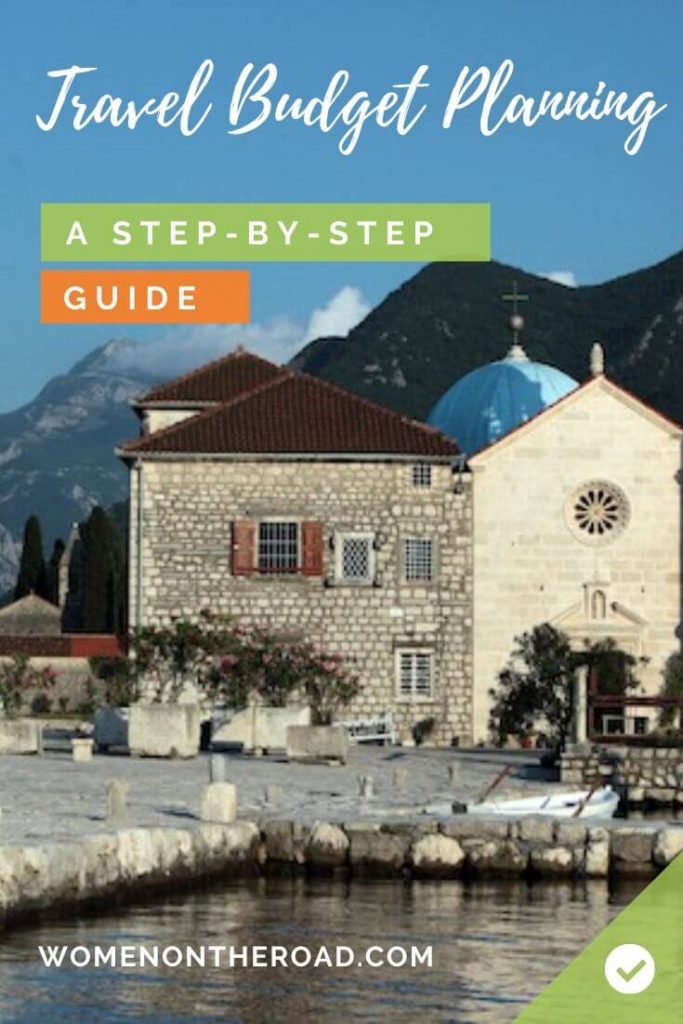Preparing a travel budget is a thankless task, with endless calculations and often iffy results. It’s a bit like throwing a handful of hay to the wind and expecting it to fall back to the ground in a perfect pattern. In other words, the outcome is often unpredictable. I often find that women who travel solo have the mistaken belief that just because they are on their own, their trip will cost less and that worrying or planning is pointless. I couldn’t agree less!
Solo travel can be expensive and drawing up your travel budget ahead of time is one of the best ways of keeping those costs as low as possible.

Travel can be expensive – but there are ways to bring costs down and you can often travel even if you’re almost broke.
Where do you start? By using other travelers’ experiences, of course, with tips and advice from people who have done it before and are sharing what they know.
To make your travels easier I’ve compiled a list of some great blog posts and tools that take you step by step through planning and adjusting your budget for travel.
But first, a brief look at startup costs.
As sources, I’ve used solo female travelers where I could, but where I found no information, I tried to stick with solo travelers generally. Occasionally, the only breakdowns I could find were for couples, so I’ve used those as well.
HOW TO BUDGET SOLO TRAVEL: THINGS TO THINK ABOUT BEFORE YOU EVEN START
Remember that in addition to budgeting for your actual travel, there’s also what you’ll spend getting ready to leave – the startup costs, the upfront expenses. Here are just a few examples of the kinds of things you’ll have to keep in mind:
- You’ll have to choose a backpack or any other kind of luggage, which can set you back anything from $30 to $300 and more.
- Then there’s the rest of your travel gear and accessories: clothes, good boots and shoes, and the various products – creams, toothpaste and other toiletries. My travel packing list can help you decide what to take.
- Your international travel vaccinations can be quite steep if your insurance doesn’t pay for them. Check with a local travel clinic or your doctor.
- Don’t forget to cost your first aid kit checklist if you’re heading out into the wild.
- The various visas to different countries can cost hundreds of dollars, not to mention the photographs you’ll have to provide for each visa.
- You’ll have to factor in the cost of travel and health insurance, especially if you come from a country like the United States, where health insurance is private and costly.
- What about what you’re leaving behind? Any rent to pay while your place sits empty? Pet care costs? Furniture storage?
- And finally, there’s the cost of international transport, your flights, for example…
This gives you a taste of the kinds of things you’ll have to keep in mind. All of these may not apply but if you’re heading out for any length of time, you will have to be organized.
COST OF LIVING IN COUNTRIES: FIGURE OUT HOW MUCH THINGS COST ABROAD
A number of sites provide information on travel costs by country or by region. These are especially handy if you’re visiting several countries at a time. (Because some of these sites provide information in local currency, drop by xe.com if you need to convert to your own currency.) Here goes.
- A Little Adrift has an incredibly useful spreadsheet of Shannon O’Donnell’s own travel expenses.
- Budget Your Trip: helps you estimate, plan and track your travel expenses to over 2000 cities.
- Travel Math can help you estimate the cost of a road trip.
- Expatistan: compares the cost of living in thousands of cities around the world (mostly for expats but great information for travelers too).
- Transitions Abroad: also shows you how to create a reliable checklist for your travel budget but comes with plenty of additional advice.
- The Professional Hobo is a former financial planner with an interesting and highly personal take on sustainable travel and budget planning.
HOW TO TRAVEL ON A BUDGET: NOW LET’S BREAK IT DOWN
The sites above help you compare countries or look at global costs. The following posts dive deep into each country or region – the specifics! Not for every part of the world, of course, but for quite a few.
Planning a trip to Europe
- As always, you can count on Transitions Abroad for solid information (like the cheapest seasons for airfare, for example).
- Here is yet another calculator – this time, though, it’s for Europe only (from Route Perfect).
- Desperate to see Paris? Here’s a budget breakdown from The Weekend in Paris.
- Budget Traveller, Nomadic Matt and Rick Steves all provide some great budget tips for Europe, each from a different perspective.
South and Southeast Asia travel
- Here’s a backpacker budget from Indie Traveller and a six-month budget from Be My Travel Muse.
- Digging deeper, here’s Travel Freak‘s budget take on Thailand.
- My Funky Travel looks at Myanmar on a shoestring, Nomadic Matt comes through on the Philippines, Neverending Footsteps survives expensive Singapore, and Claire’s Footsteps itemizes a week in Malaysia.
Travel budgets for Northeast Asia
- Japan Guide has a detailed breakdown for all budgets in Japan (from 2018), and Phenomenal Globe looks at costs for a couple.
- For China, Travel China Cheaper provides a budget summary.
Africa travel budgeting
- Some tips for traveling cheaply in Africa from Big World Small Pockets.
- For 10 days in South Africa, check out On the Luce and for a month, Broke Backpacker.
- Check out Sherman’s Travel for an idea of safari budgets.
- And here’s the Price of Travel‘s Africa and Middle East backpacker index.
Central and South America travel budgets
- Budget Your Travel is good for costs in the Caribbean.
- Expert Vagabond posts costs for Honduras.
- Go Backpacking shows us an affordable Costa Rica.
- Indie Traveller looks at costs overall for South America.
Trip budgets for North America
- Nomadic Matt excels on this part of the world, including good tips for Canada.
Australia and New Zealand travel budgets
- Here are some New Zealand budgets from Our Big Fat Travel Adventure and the Broke Backpacker.
- Y Travel Blog shows you how to keep costs down in (expensive) Australia, as do some tips from World Nomads.
- Stay at Base focuses on Australia’s East Coast.
HOW TO ACTUALLY PLAN YOUR TRAVEL BUDGET
What do you actually include in your budget? What proportion should go to accommodation, and how much should you set aside for food? Is there anything you can do without, or substitute? What steps do you actually have to take to get your budget done?
Here are a few things to keep in mind:
- Your biggest cost will probably be airfare (although do consider a round-the-world ticket if you really ARE going global). These are relatively fixed and there is little leeway for savings (other than flying regional discount airlines whenever you can).
- Figure out your daily costs by using the tools above. Start with your total budget, divide by the number of days you plan to travel, and you’ll have a (vague) idea of what you can spend each day. Of course this will vary wildly by country, but we’re looking for an average. Your next most expensive cost will be accommodation, and this is where you can make or break your budget. I have major issues with Airbnb so I use them sparingly, but they do tend to work out cheaper than hotels, especially when it comes to…
- Food. This is my next big ticket item because I love to eat well. By having a kitchen, I save about 50% of my food costs or more. I have a wonderful lunch out (cheaper than dinner) and cook for myself in the evening.
- My next major expenditure is sightseeing, with entry fees creeping up almost daily. I find I can cut expenses by buying tickets in advance through Get Your Guide or Viator, not to mention saving time by skipping the line. I do try to stay away from any other kind of organized tour because while they may end up being cheaper for a couple or a group of friends, solo travelers rarely get a decent deal and tours are often too expensive for us.
- And the final cost for me is transportation. This tends to be a low-cost item once I’ve paid for my airfare to the destination, because I use low-cost airlines, local trains, or buses.
TIPS, TIPS AND MORE TRAVEL BUDGET TIPS
You know those things you forgot to budget for? If you read these posts there’s a good chance you won’t forget – and plan for a few extras too.
- Budget Travel looks at 7 outreageous travel fees that can blindside you and how to prepare for them, and Lifehack suggests 10 travel expenses to include in your budget. There are a few overlaps but – at least you won’t forget.
- These tips from Gadling are just reminders. You know all this – you just needed to remember.
- Do you love apps? Can’t live without them? These two should help your travel budget: Trail Wallet and Google’s Trabee Pocket.
SOME FINAL TRAVEL BUDGET CONSIDERATIONS
A word of warning: In some places these travel costs will be way off for safety reasons. This is especially true where being a solo woman is difficult, for example in a low-end hostel in a riskier part of town. Most often this is not the case, but be forewarned – if the region you’re visiting on your own is unsafe, plan to stay in more secure – and therefore more expensive – accommodation.
You’ll also have to contend with additional costs – safari entrances, canopy tours, cookery courses and the dreaded single supplement. You may not know how much each of these activities will cost, but I tend to budget $100 per activity. They may be cheaper but this keeps me in the ball park.
Once you’ve figured out how much to take with you, you’ll have to decide how to take it with you. There are plenty of ways you can carry your money (these days I tend to aim for prepaid or credit cards) but I also carry cash. Remember to hide any money, cash or otherwise, in a travel money belt, an infinity scarf with a secret pocket or an anti-theft travel handbag.
Remember, you might be able to stretch your money… You could find a job or work online or teach English to earn money on the road. You could sign up for volunteer work: not only will you be doing some good and making a difference, but if you volunteer locally, chances are you’ll be able to stay with a family in the longer term at very little cost. If you do continue to be a paying traveler, there are plenty of travel accommodation options along the way.
And finally, here are some great travel budgeting tips from some of the world’s top travel bloggers: see what they have to say about getting the most out of your travel funds.
I left home for a one-year RTW trip with $11,000 to my name. I ended up traveling for nearly four years on this amount, working along the way as a writer (with a few less glamorous jobs thrown in). I kept telling myself, “You can always go home if you run out of money.” Just knowing that relieved the pressure!
— Originally published on 18 December 2015
PIN THESE PICTURES AND SAVE FOR LATER!



